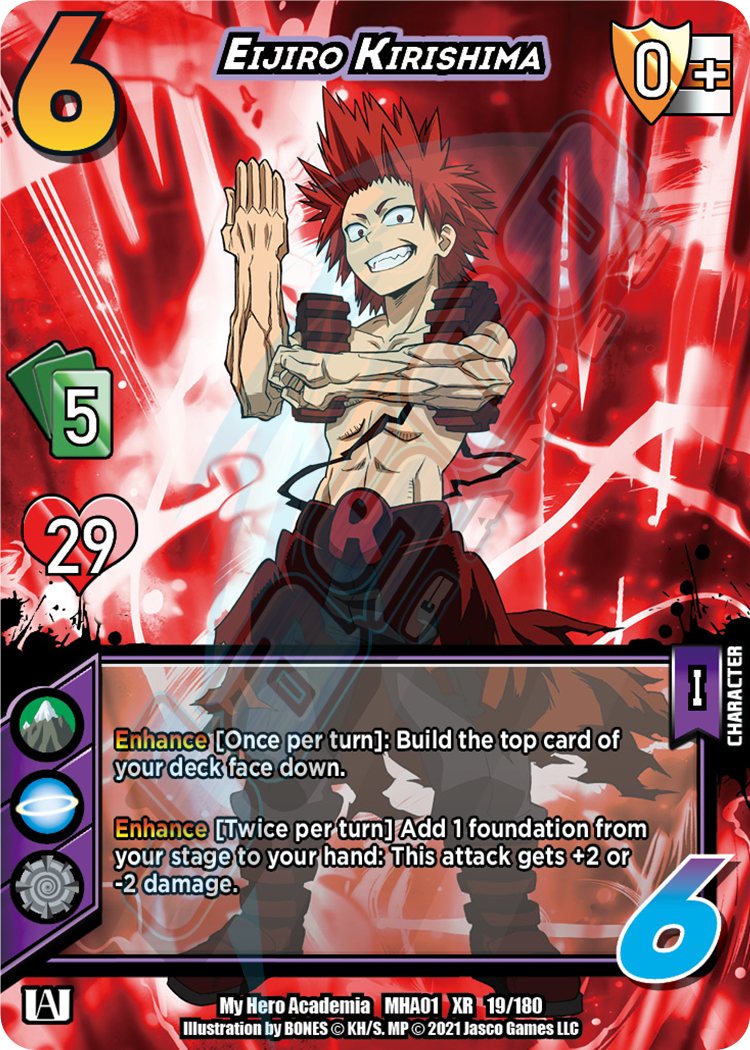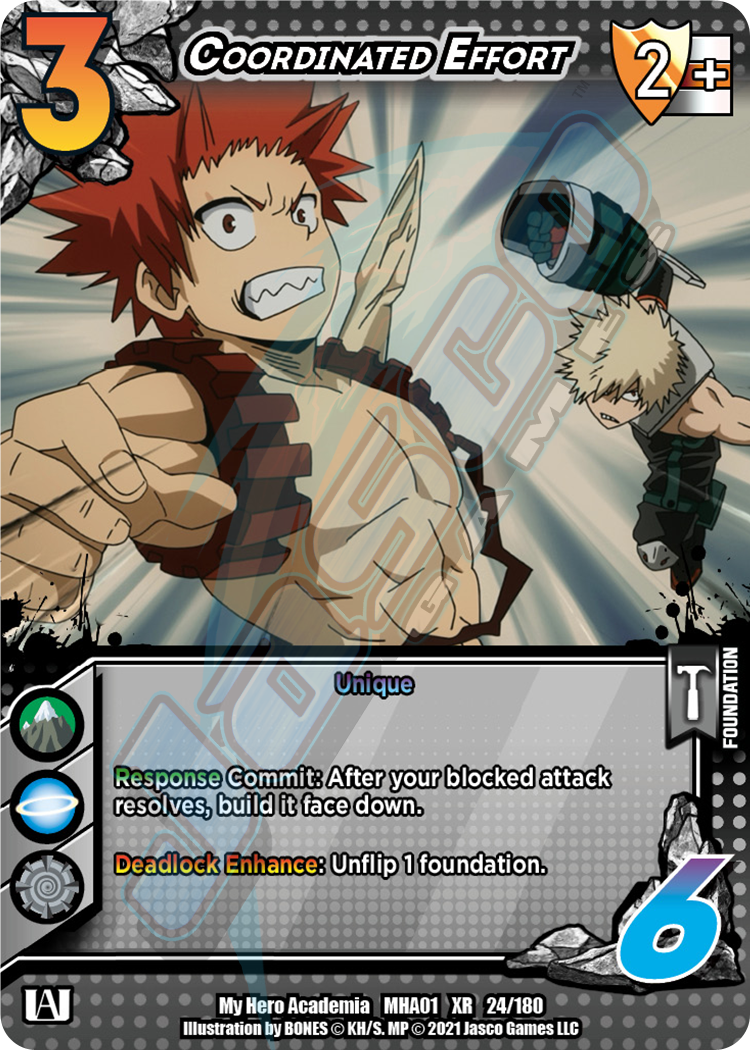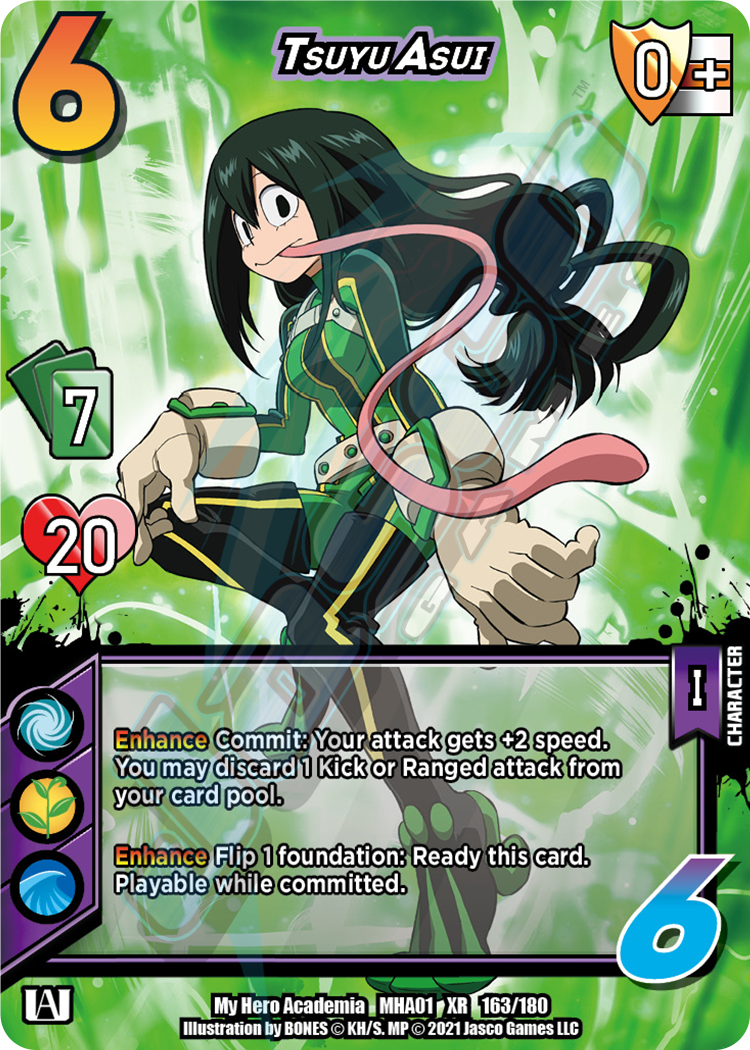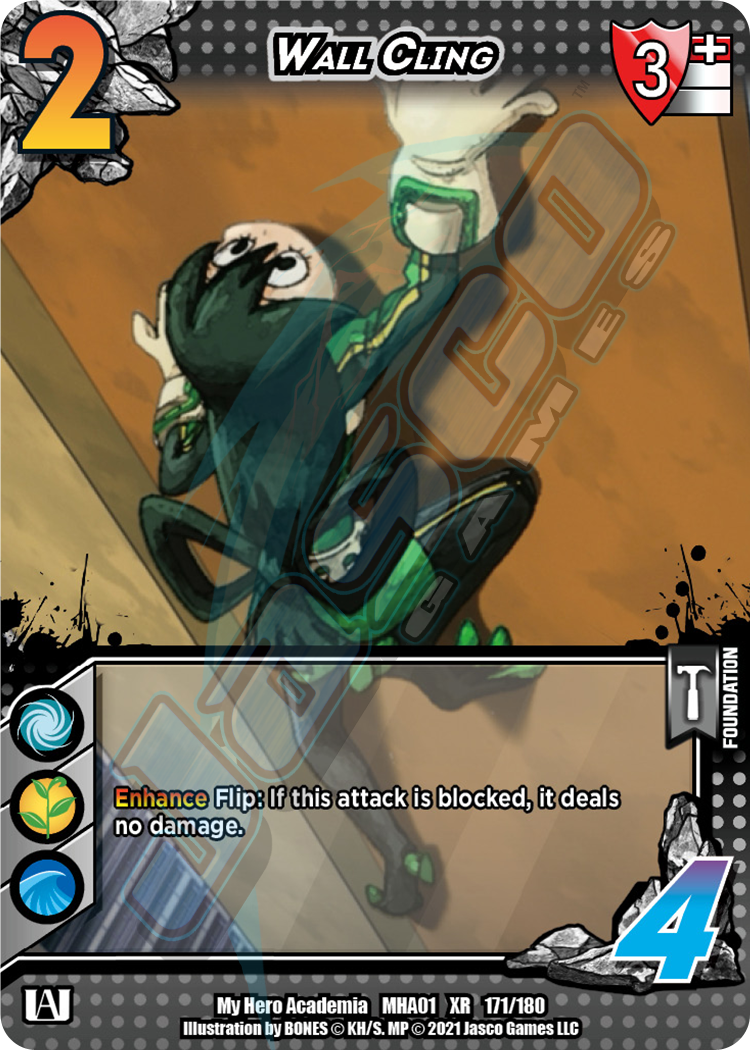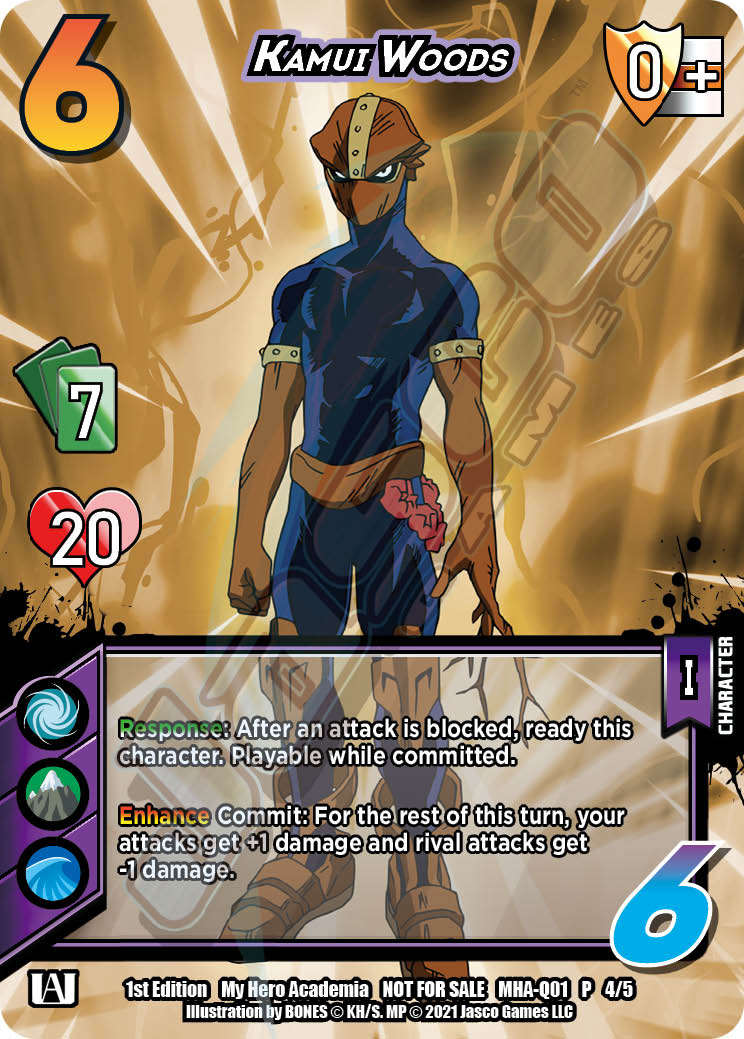With the calendar turning the page on the first format and ushering in a new wave of decks, there’s no better time to take a look back on the game so far and learn from the past three months of play. From the rise and fall of the dominant Kirishima to the recent surge of Froppy creeping up on the format, the MHA landscape has been packed with surprises.
The first format started off with everyone’s biggest fears being realized. On November 6, Kirishima claimed a dominant victory in the first publicized event, just three weeks after the release of the first set. The deck used its ability to defend mixed with its unique ability to store attacks in the Stage area and pick them up later for consistent aggression. This made him far and away the top deck of the format. After another dominant showing in the first Provisional Showdown, Jasco Games errata’d Kirishima and banned his best support card, Coordinated Effort.
We learned two lessons from the Kirishima Era. First, Jasco will not hesitate to step in and correct a card that’s gotten out of hand. They made similar erratas for online play with cards that require players to reveal cards into the webcam, yet not see the card themselves. With a game that doesn’t wait for a periodic banned list to edit the format, the game enjoys a lot of parody. This has allowed decks like Froppy 1 to shine in recent events. At the end of the day, make sure you don’t give up on a deck for the wrong reasons. Plenty of players left Froppy for dead until she showed everyone what she was capable of.
The next lesson is more applicable to making you better. Looking at decks that have outlasted the field to win events, we notice a pattern. Decks that win in large numbers have to be elite in three categories; speed, attack power and ability to defend. There are a number of decks that do two of the three very well, like Momo Yaoyorozu. She has access to great defensive strategies and can put together attack turns that are scarier than anyone else. However, she rarely sees the Top 16 because she is one of the slowest decks in the format, requiring several turns of building Foundations and Assets before she can go on the offensive.
One of my favorite lessons came from the most recent event when Jose Norono won the entire event with a card that had no effect at all. He included the Kamui Woods character card in his Main Deck of his Froppy 1 deck. Now if you’re newer to the game, this is not a common play. If you play a character card from your hand, you have to pass a base difficulty of six, which almost always requires committing your own foundations, and once you play it, nothing happens! The character just goes to the discard pile.
So, what was he thinking? Well there are a couple of benefits. First off, the Characters have a zero Mid-Block Modifier, the best possible block. So at least if he draws the card, at least he can use it as a block. But if he doesn’t draw it and instead uses it to pass a check, he has added another six Control Check to his deck, helping him pass more checks. But the last reason is probably the best. In MHA, the side deck size is very restrictive at only 10 cards. Adding the Kamui Woods to the Main Deck allows Jose to trade Character Cards without dipping into his Side Deck, effectively creating an extra Side Deck slot. Now, this isn’t advisable in every deck. For example, Tokoyami can’t do this as he needs every card possible to feed him attacks. However in the right deck, this was, dare I say, a stroke of genius.
Let that be a lesson that this game is a canvas ripe with opportunity to innovate. Test your strategies and let them flourish. Until next time heroes, I’ll see you on the tables.


